After stepping down from testing the monstrous Dodge Ram, the new Isuzu D-Max LS was more eye-opening than expected. The Dodge is everything that we know and love about America – excessive. They have options purely because they can, not because you need them. So it was nice to move into something that was more in line with New Zealand’s requirements. Like all great ideas, the best ones are simple but very effective.
The Range
The Isuzu D-Max range is available in 6 platforms. 3 of which are 4WD only, and the other 3 are available with selectable 2WD & 4WD. Double-cab models are available in LS, LX and LS-T spec. Single space-cab is available in LS and LS Chassis, and the single cab is available in LX Chassis. Both of the chassis models come with a custom aluminium flat deck as opposed to the standard ute deck. The range starts with the LX Automatic 2WD at $39,890 and with 11 variants to choose from; it goes all the way up to the LS-T Automatic 4WD starting at $61,990. Our review vehicle is the LS Automatic 4WD which starts at $58,990
Every model available comes with the 3.0-litre turbo-diesel, in-line 4-cylinder, DOHC, 16-valve Isuzu 4JJ1-TC Hi-Power diesel engine. They produce 130kw @ 3600 rpm and 430 Nm of torque between 2000 > 2200 rpm. All models are available in 6-speed manual or automatic transmission.
For the models that come with selectable 2WD & 4WD, you have the latest “Terrain Command” system which allows you to switch on the fly from 4H-2WD at speeds up to 100km/h.
Every model is built on a full-length, heavy-duty truck chassis, and comes with front independent high ride coil springs, with gas shock absorbers, upper and lower wishbones and stabiliser bar. The rear has an alloy-steel over slung long-span leaf spring with gas shock absorbers. And for the two flat deck chassis models, the leaf springs and shocks are upgraded with heavier duty parts.
First Impressions
The RT87 is not so really a new vehicle, but not really a facelift either. Without having them side by side I would not have been able to pick out the changes. But I mean this in a good way. The changes still keep the iconic look of the Isuzu D-max, while keeping it modern looking. So in my mind, it looks the way it always looked: great.
For those who want to know what’s changed, there is an all-new front bumper and grille, new headlights and bonnet. The big changes overseas were engine options – smaller ones. However, Isuzu New Zealand pushed hard to stick with the beloved 3.0L diesel engine.
The Inside
Here is where you would see the big changes compared to the RT50 (2012 to 2017 models). The D-Max has never been one for the creature comforts, but they have taken the simple and easy to use features and functions and added in some of those well-needed upgrades.
Now in the middle of the dash is an 8-inch touchscreen media display. This allows access to Sat Nav, Bluetooth media, and a rearview camera. Overall I found the system pretty easy to use and found it very good in general. However I do have some issues with it, the biggest one being the large button in the middle of the row of buttons below the screen. Or what you think is a button, as it looks like every other button, with the word Map on it. I thought pressing this would bring up the nav or map. But it does not because it’s not actually a button at all. It is, in fact, the cover plate for where the microSD card with the region’s sat nav data is inserted. A bit of poor design work there Isuzu, as it could have been hidden away, and this could have been a useful button to take you quickly to the nav.
Right under the media display, there is a large circular array of buttons around a large central dial. This central dial has a digital display in it, showing the selected temperature. This array gives you quick and easy access, to the air-con, and standard fan and window demisting buttons. Nothing fancy, but simple and easy to use. And the buttons are big which means they are easy to use even with gloves on,
The rest of the cabin is not too dissimilar to the previous models. Tough hard plastics that you know were able to take a bit of a beating, and just shrug it off. Good quality fabric seats, with great legroom for both front and back. I am not usually a fan of fabric seats, I am tall and find they can lack the support I need for longer driving. But the seats in the D-Max are great, and I feel like I could go all day in them.
With the added media and Bluetooth features, there are some changes to the steering wheel. Nothing complicated though, just a small selection of easy to use multi-function buttons.
The Drive
I have found the D-Max to be one of the few utes available on the market that drives more like a car on the roads than a typical ute. And this is a great thing, as the ride and handling feel more like a car then something high with lots of body roll. This gave me great confidence on the roads, as you have a good expectation of how this ute will perform.
It’s easy around built-up areas, very light steering, and just as chilled on the motorways. On the backroads, if you are up around the speed limit, I found I could take some corners just like a car, not having to worry about the body roll. This meant you could have a bit of fun on what could be an everyday drive. Nothing crazy, of course. But you don’t have to slow down at every bend in the road, due to the body roll and hidden feeling that you’re about to roll over.
The only issue I had with the D-Max – and this may just be a personal thing – I found the brakes a bit soft, lots of travel, and then you start to get some stopping power. This caught me off-guard a few times, where I had to dive on the brakes, as some soft presses weren’t slowing the vehicles down as much as I would have liked.
Over the week I had with the D-Max I got used to this. So maybe it’s just me, but I would have liked a bit more range in the brakes, which would have worked well with the great on-road handling.
Off-road, the D-Max was a champ. It has the Terrain Command system, such a breeze to use. Going from 2WD Hi to 4WD Hi on the move up as fast as 100kph. Great for when you’re just leaving the good roads and hitting loose metal roads. And when you need to go to 4WD Lo, it’s just a push-down and one more turn of the dial when stationary. A couple of seconds later, you’re good to go.
I keep on saying it about the MU-X and D-Max, but they know how to keep things simple. And this is what the entire experience was about. Anywhere we went, the D-Max handled it like the tough truck it was. I know deep down that the truck wasn’t handling the majority of the terrain we covered due to the skill of its driver. But the D-Max did not showboat, and let me have this one. It showed its maturity and confidence in its own ability.
A few years ago I tested the previous model and I had the opportunity to take them around Wellington’s south coast to Devil’s Gate. It was easy enough to get to the gate itself. Most SUV or Utes would have no trouble at all. Sand, stones, and some small water crossings. But when you come to the gate, you know that it’s not for everyone.
Oddly enough two Isuzu MU’s – the 1990’s model – came up and over the gate towards us. They stopped to chat and have a look at the new trucks we had with us. And they said you might find it difficult getting over the gate, as the majority of older trucks have the modification to help, lift kits etc. That to us sounded like a bit of a challenge. Isuzu said these trucks were tough, so we thought, let’s see how tough. After setting up, selecting Low 4, we set off up the gate. With very little effort at all, the D-Max was at the top and crawling over the ridge. There is a slight turn as you start to go down the other side, which you can’t see at all, but once the truck clears the ridge, you have enough time to guide it down the track on the other side. I was very surprised how easy it was. We had taken two stock trucks, with all-terrain tyres, up and over it, without the slightest peep or hesitation from either truck. I and the MU owners were impressed.
What it’s up against
Everything. There are so many utes on the market now. And more on the way, with Mercedes-Benz now offering the X-Class. Might not be long will we have a BMW or Audi ute too. But the main point to note is that there is a ute for everyone. So what customers really need to have a detailed checklist of what they need a ute to do.
| Brand / Model | Engine | Power | Transmission | Fuel L/100km | Price Highest to Lowest |
| Toyota Hilux SR5 Limited | 4.0 litre V6 | 175kW/376Nm | 6-speed automatic | 12.0 | $70,490 |
| Ford Ranger Wildtrak | 3.2 litre 5 cylinder turbodiesel | 147kW/470Nm | 6-speed automatic | 9.6 | $69.640 |
| Volkswagen Amarok | 2 litre 4 cylinder twin turbodiesel | 132kW/420Nm | 8-speed automatic | 8.3 | $65,990 |
| Holden Colorado | 2.8l 4 cylinder turbodiesel | 146kW/500Nm | 6-speed automatic | 9.7 | $65,900 |
| Nissan Navara | 2.3 litre 4 cylinder twin turbodiesel | 140kW/450Nm | 7-speed automatic | 7.0 | $64,990 |
| Isuzu D-Max | 3 litre 4 cylinder turbodiesel | 130kW/430Nm | 6-speed automatic | 8.1 | $58,990 |
| Ford Ranger Super Cab XLT | 3.2l 5 cylinder turbodiesel | 147kW/420Nm | 6-speed automatic | 8.7 | $58,990 |
| Mitsubishi Triton Dual Cab GLS | 2.4l 4 cylinder turbodiesel | 135kW/437Nm | 5-Speed Auto with Sports Mode | 7.6 | $59,490 |
| Nissan Navara Dual Cab ST | 2.3l 4 cylinder turbodiesel | 140kW/450Nm | 7.0 | $57,490 | |
| Mazda BT-50 Dual Cab GSX | 3.2l 5 cylinder turbodiesel | 147kW/470Nm | 6-speed automatic | 9.2 | $57,250 |
| LDV T60 Luxury | 2.8L Turbo Diesel | 110kw / 360Nm | 6-speed automatic | N/A | $34,990 |
| Mahindra PIKUP Doublecab | 2.2L Turbo Diesel | 89kw/290Nm | 5 Speed Manual | N/A | $28,739 |
| Pros | Cons |
|
|
What do we think?
Much like the MU-X, we tested a short while ago, the D-Max is a solid performer. Tough bit of kit with all the right bits and pieces, easy to live with and good value for money. And unlike the Mu-X, the D-Max has a wide range of accessories, which can allow you to have it just the way you like it. Based on its looks, and overall performance. The D-Max would be my ute of choice if I had to get one.
Rating – Chevron rating 4.5 out of 5
2017 Isuzu D-Max LS
| Vehicle Type | 4WD UTE |
| Starting Price | $58,990 |
| Tested Price | $65,990 |
| Engine | 3.0-litre turbo-diesel, in-line 4-cylinder, DOHC, 16-valve |
| Transmission | 6-speed automatic with sequential shift and brake shift lock |
| Kerb Weight, Kg | 1920 |
| Length x Width x Height, mm | 4825 x 1860 x 1860 |
| Deck Load Capacity, Kg | 102 |
| Max Towing Braked, Kg | 350 |
| Fuel Tank, litres | 76 |
| Spare Wheel | Full Size Spare |
| Fuel Efficiency | Advertised Spec – Combined – 7.7 L / 100km
Real World Test – Combined – 9.2 L / 100km |
| ANCAP Safety Ratings | 5 Stars |
| Warranty | 3 Years or 100,000km, whichever comes first. |


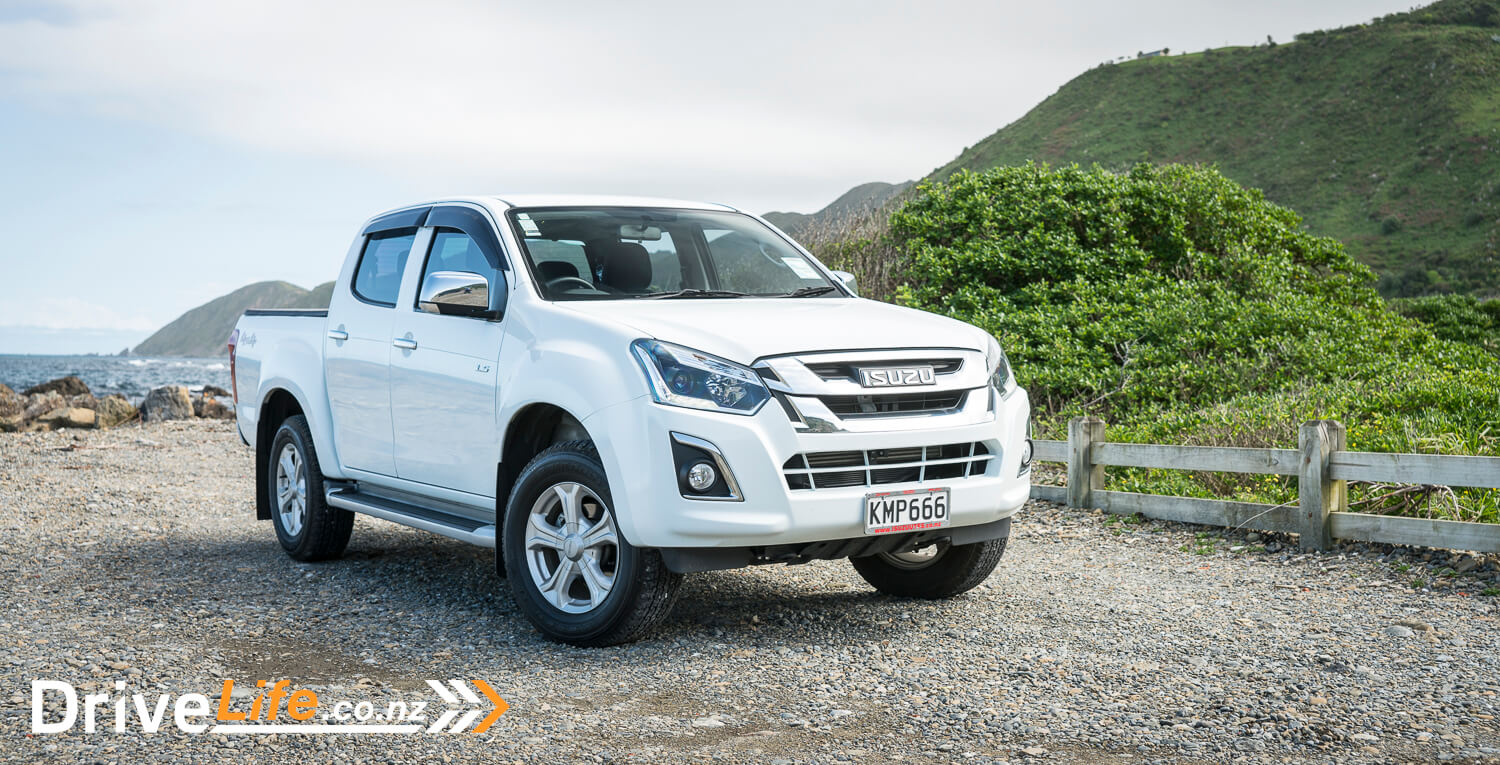
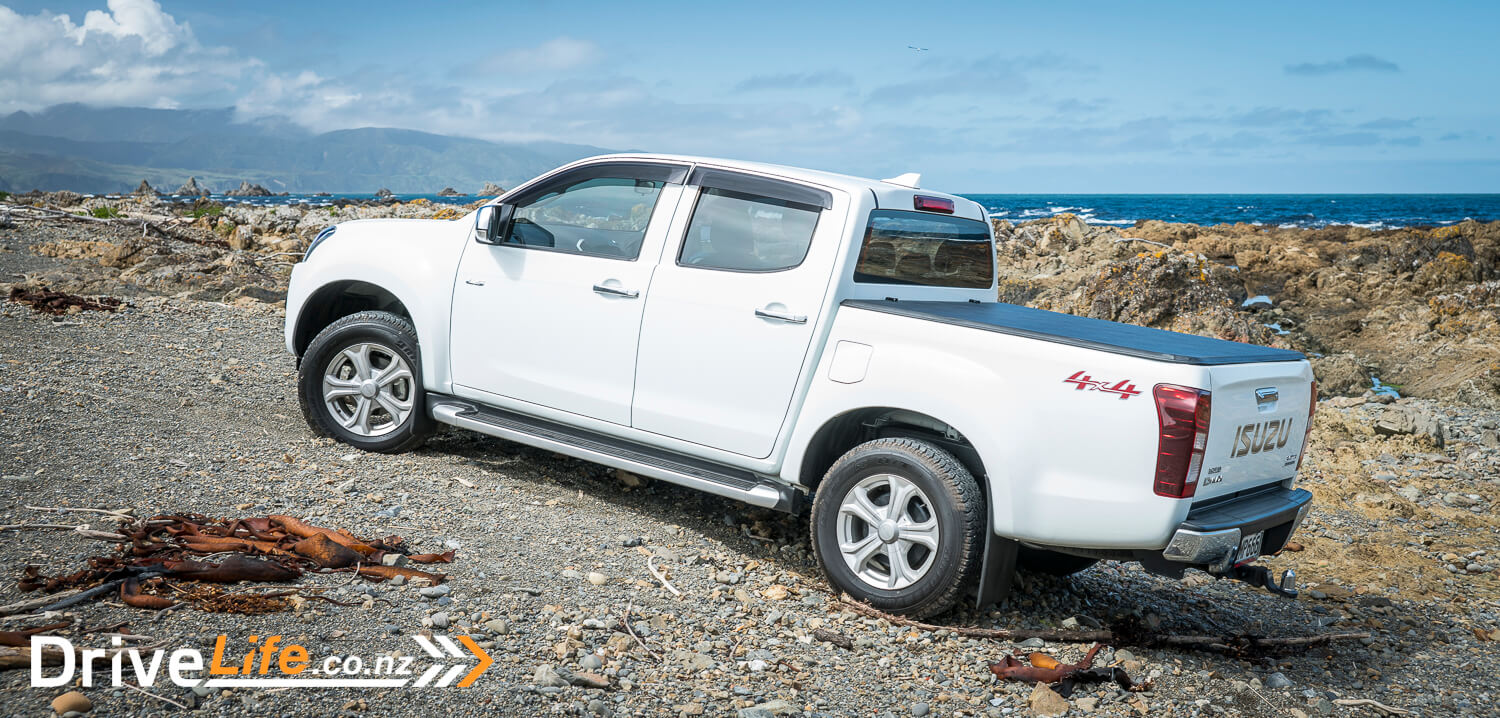

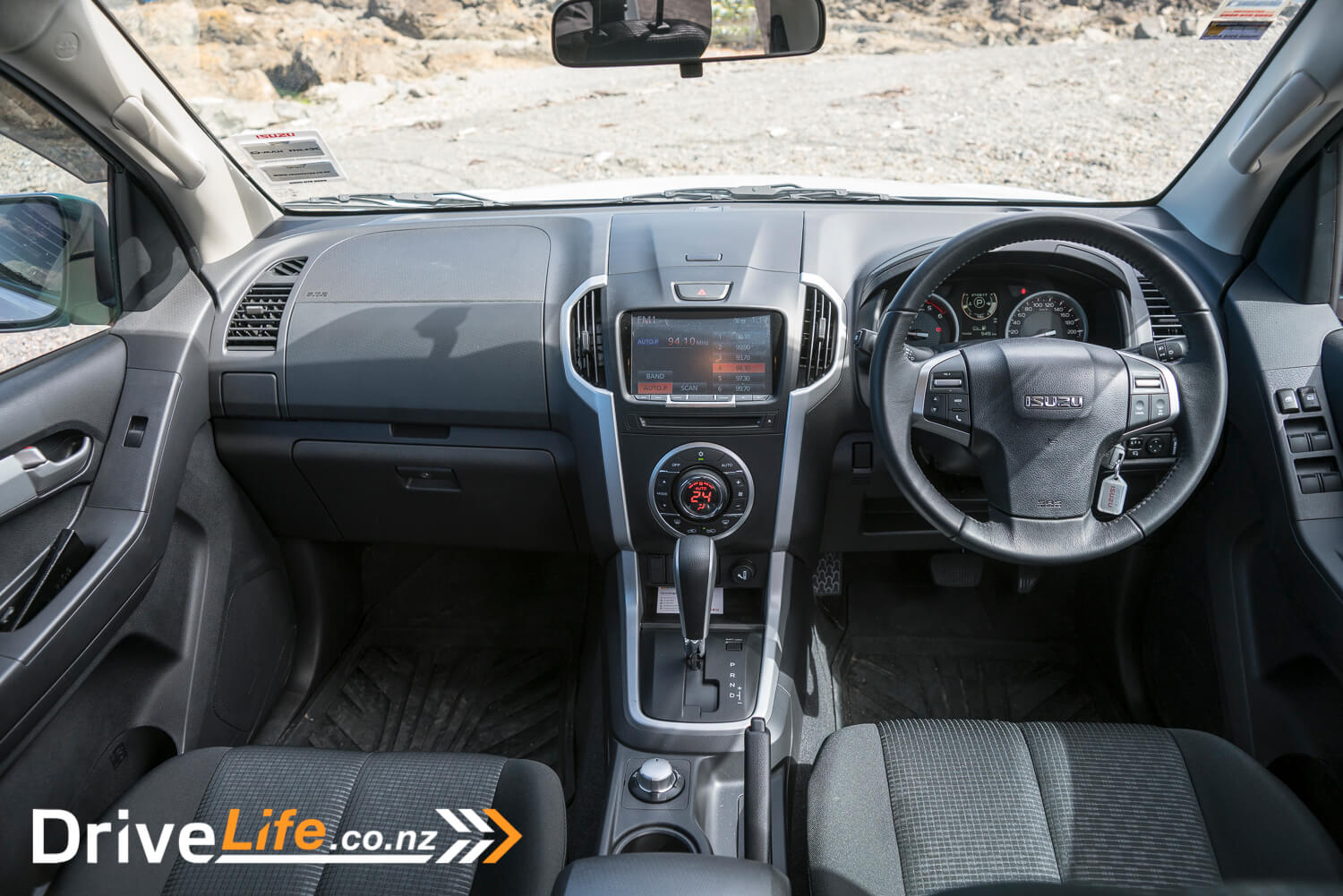
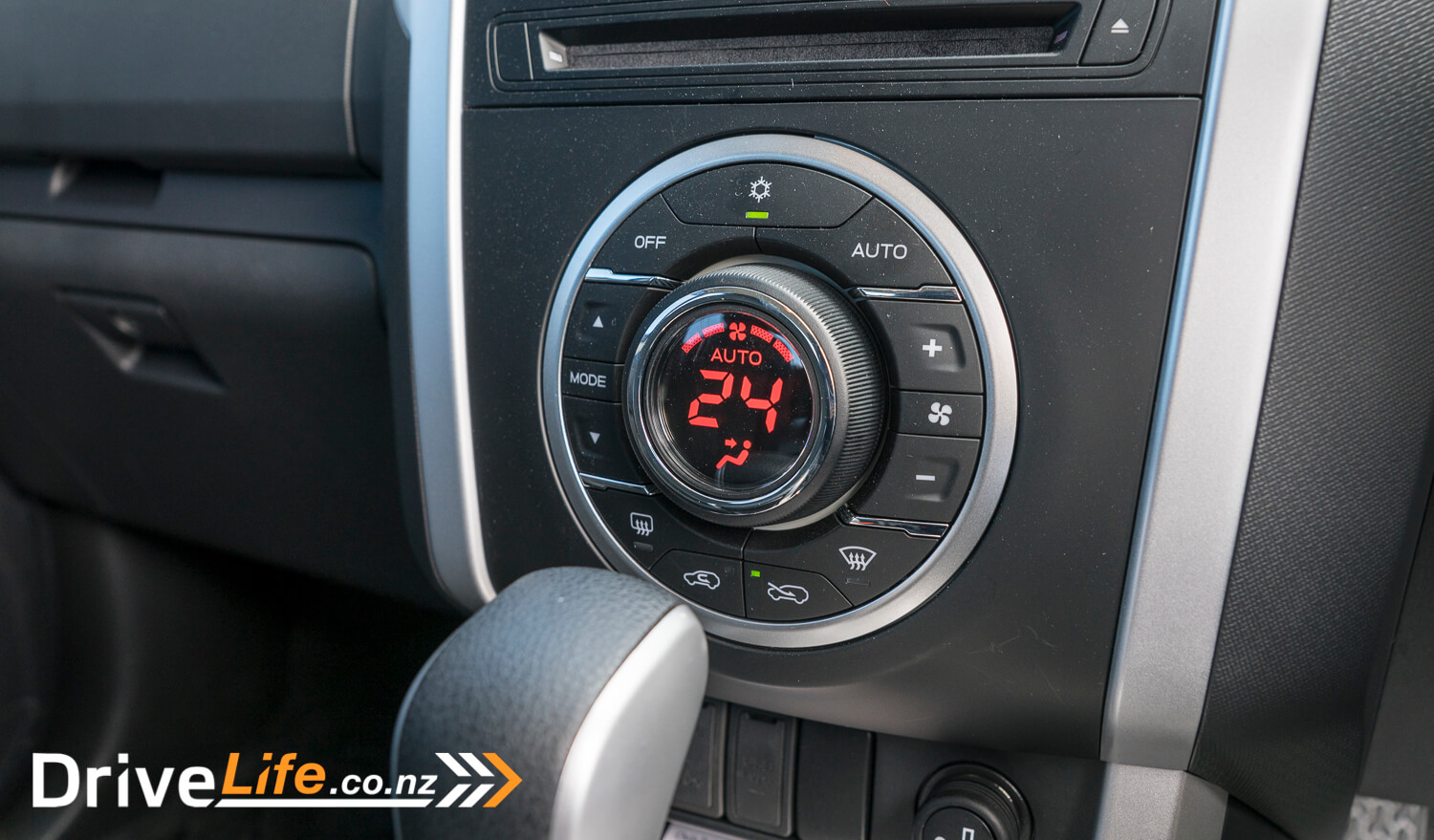
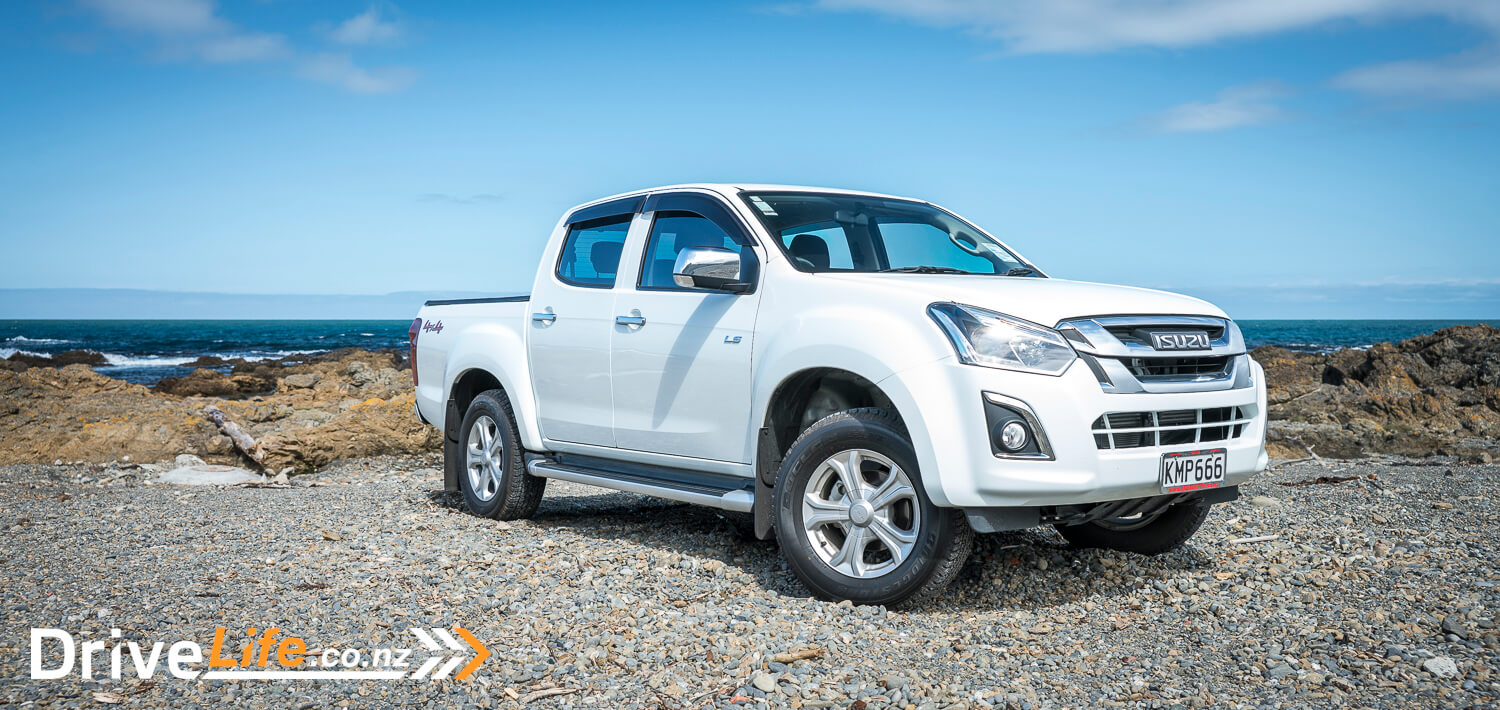
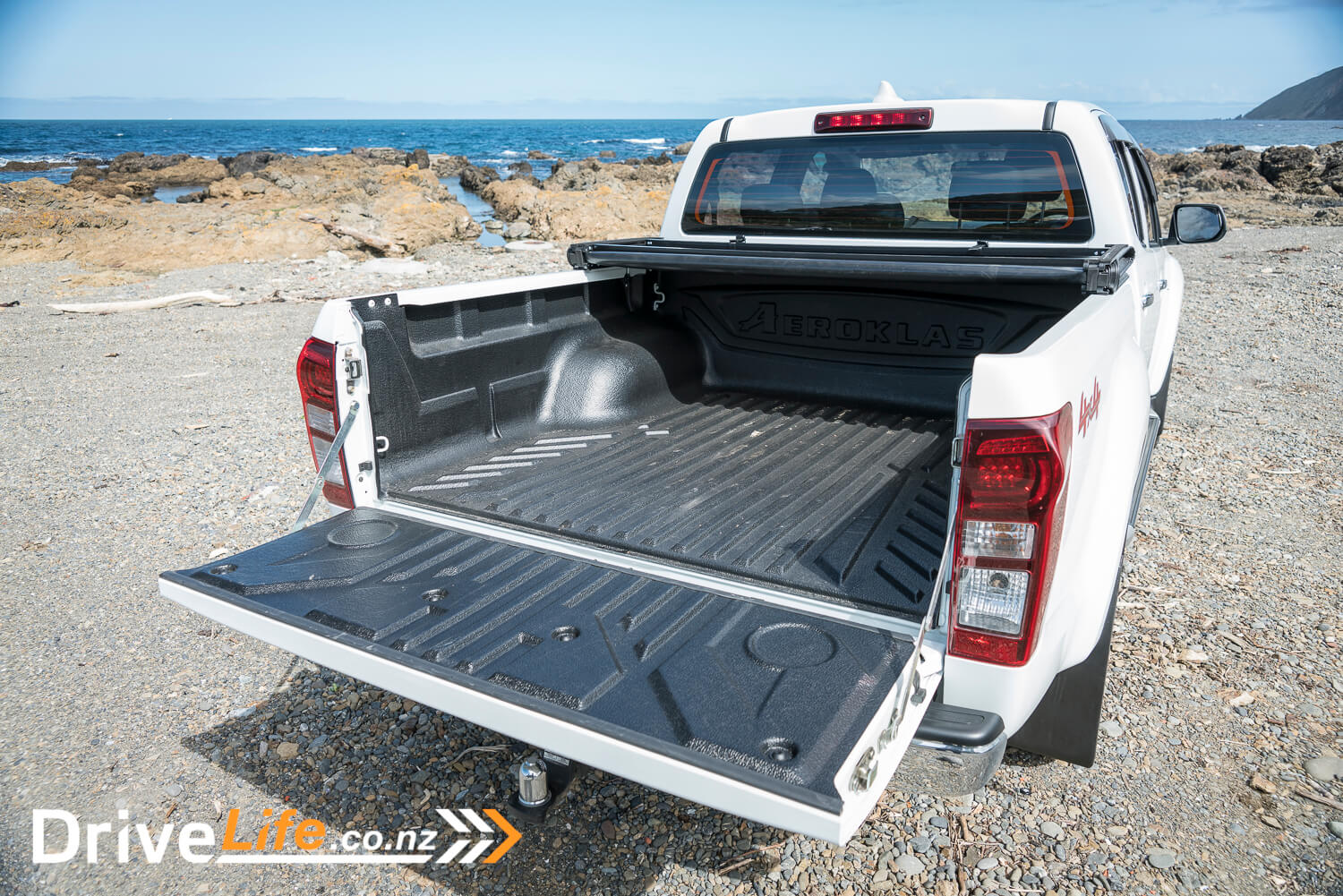
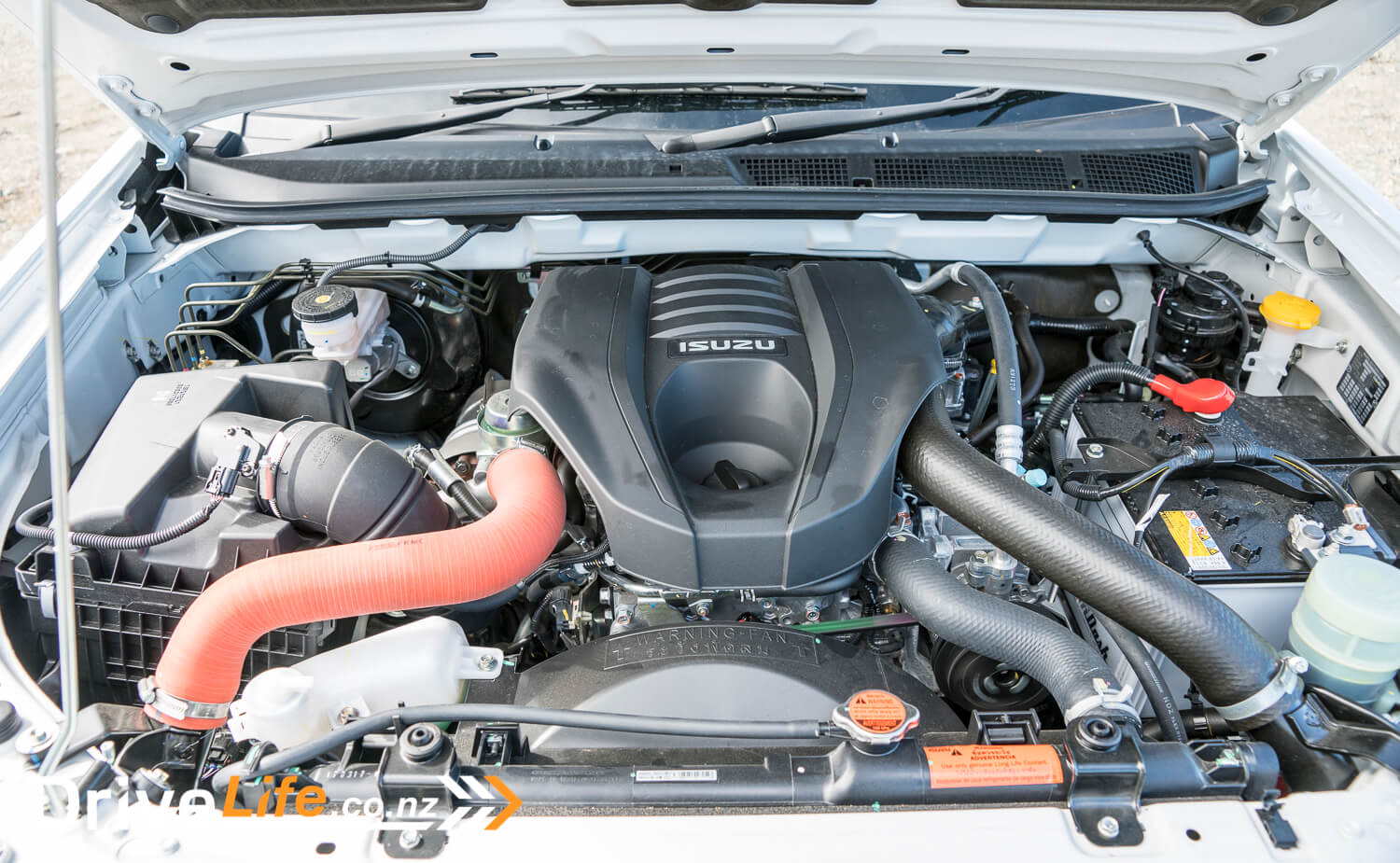
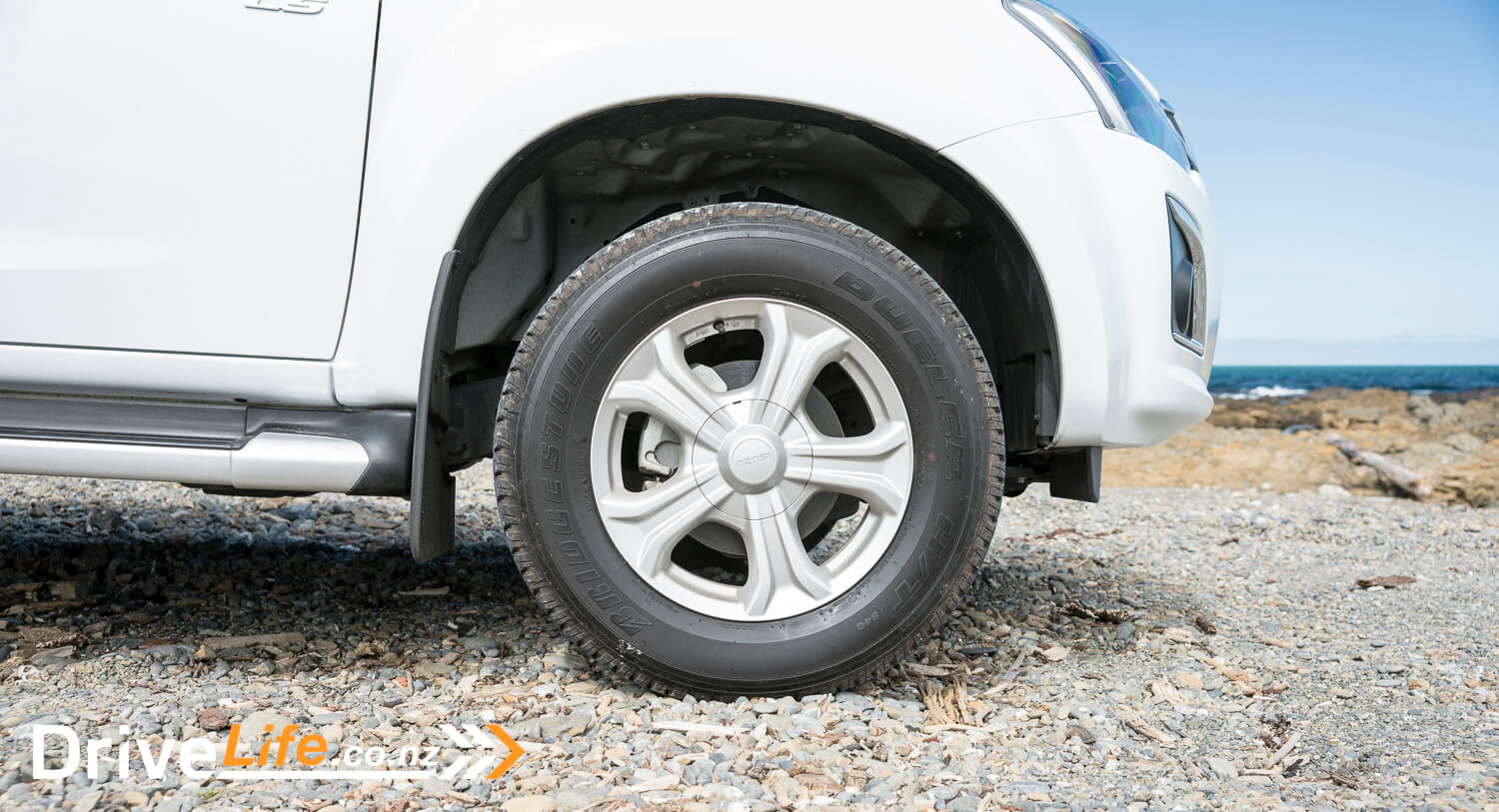
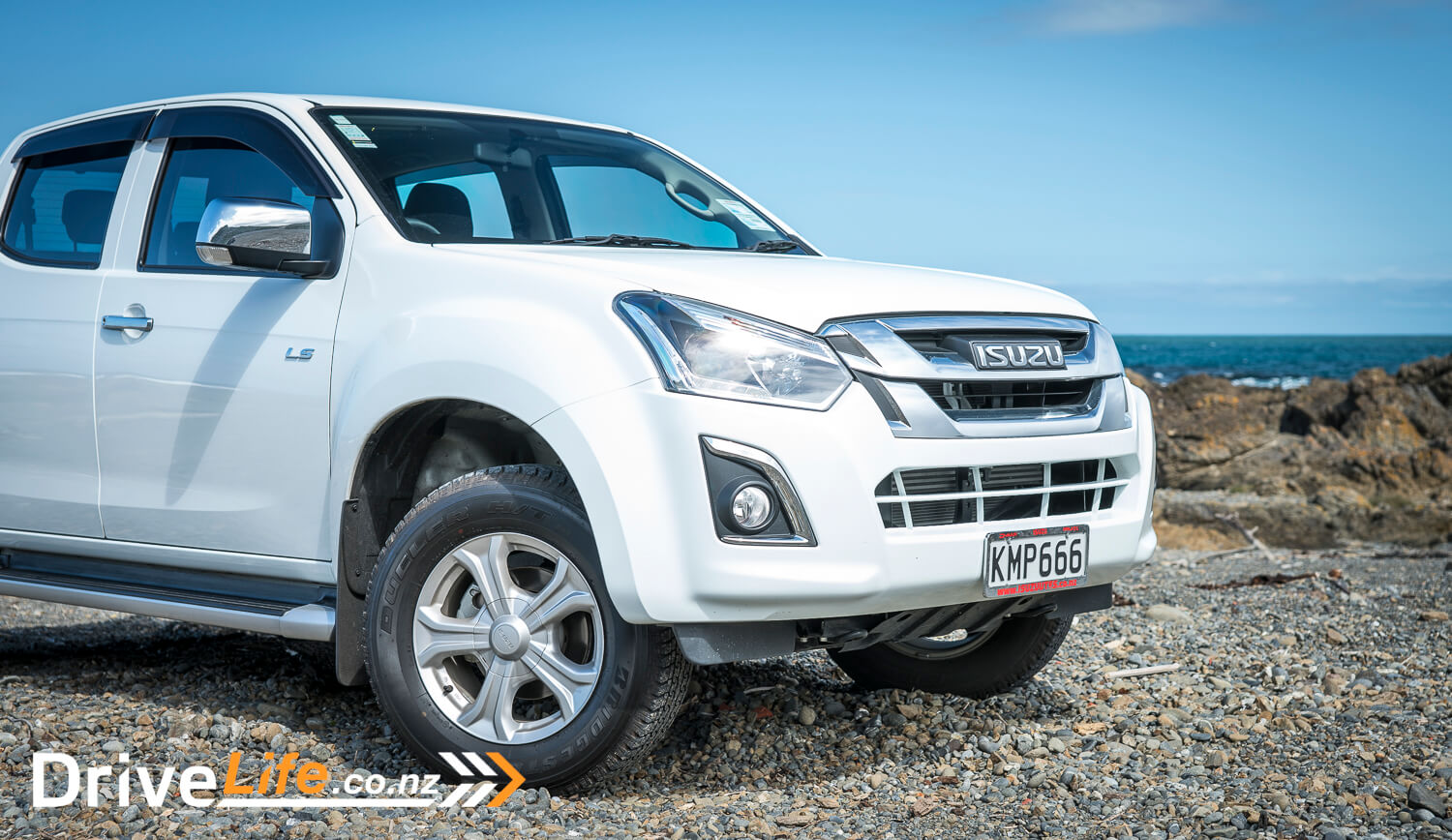
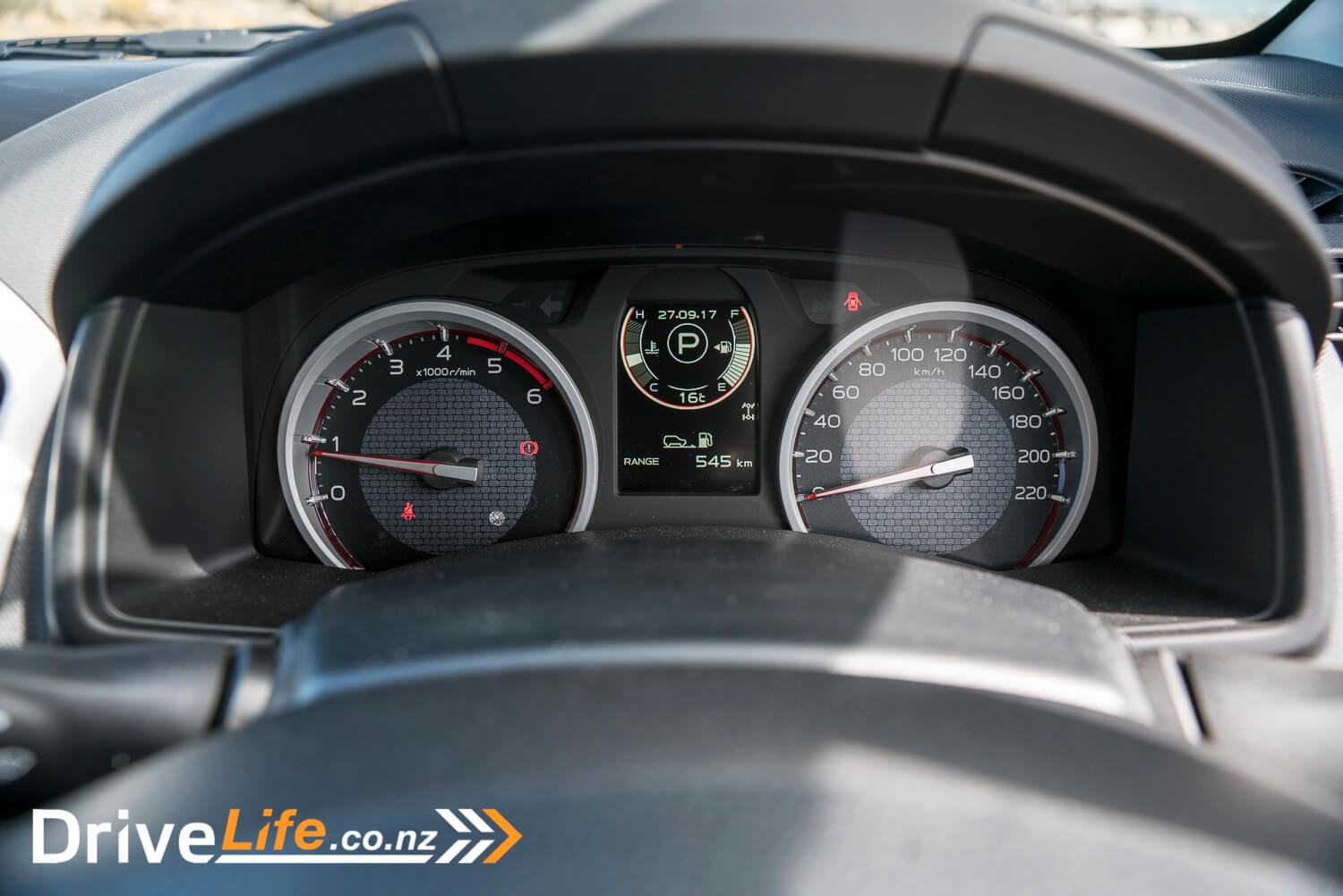
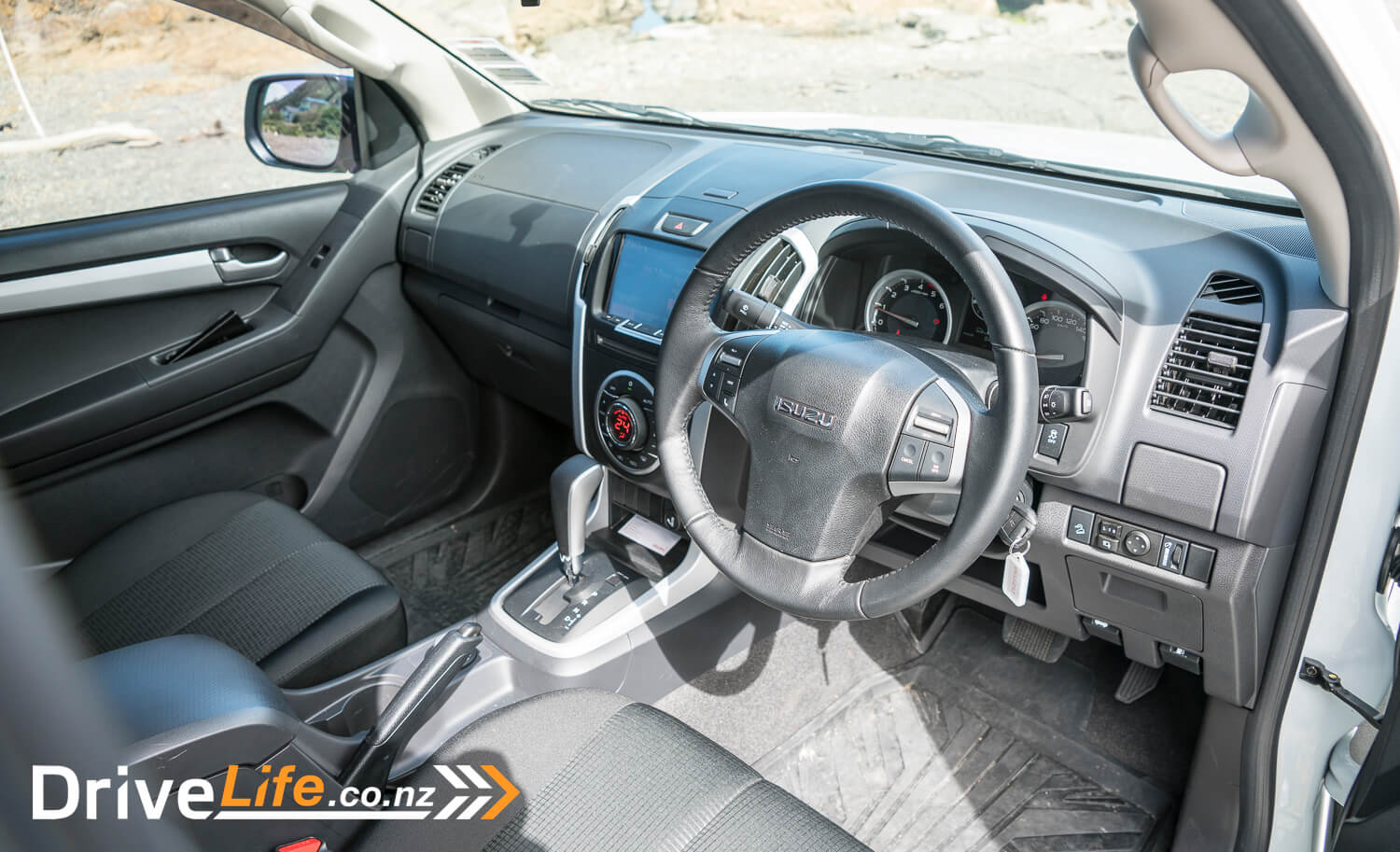
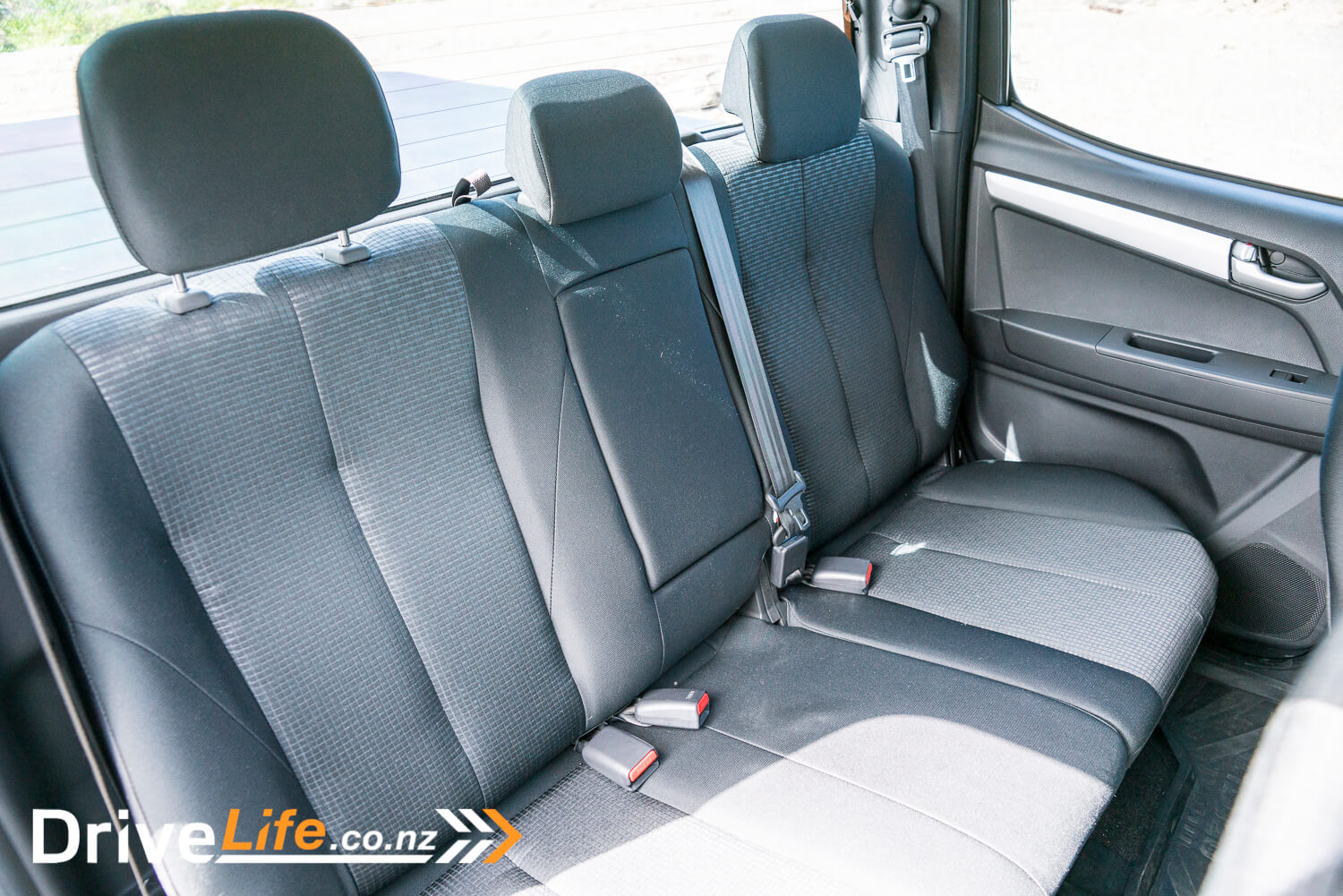
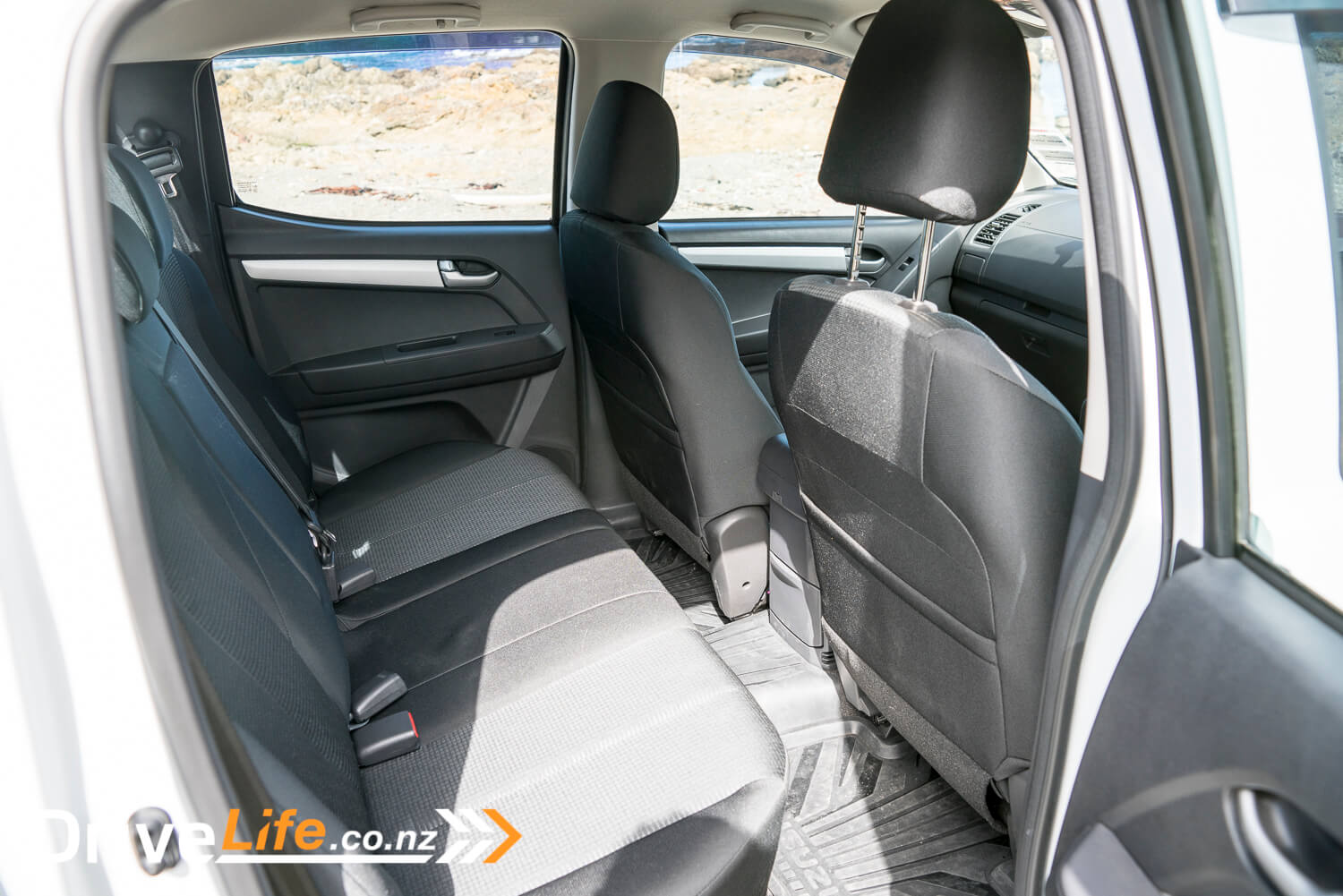
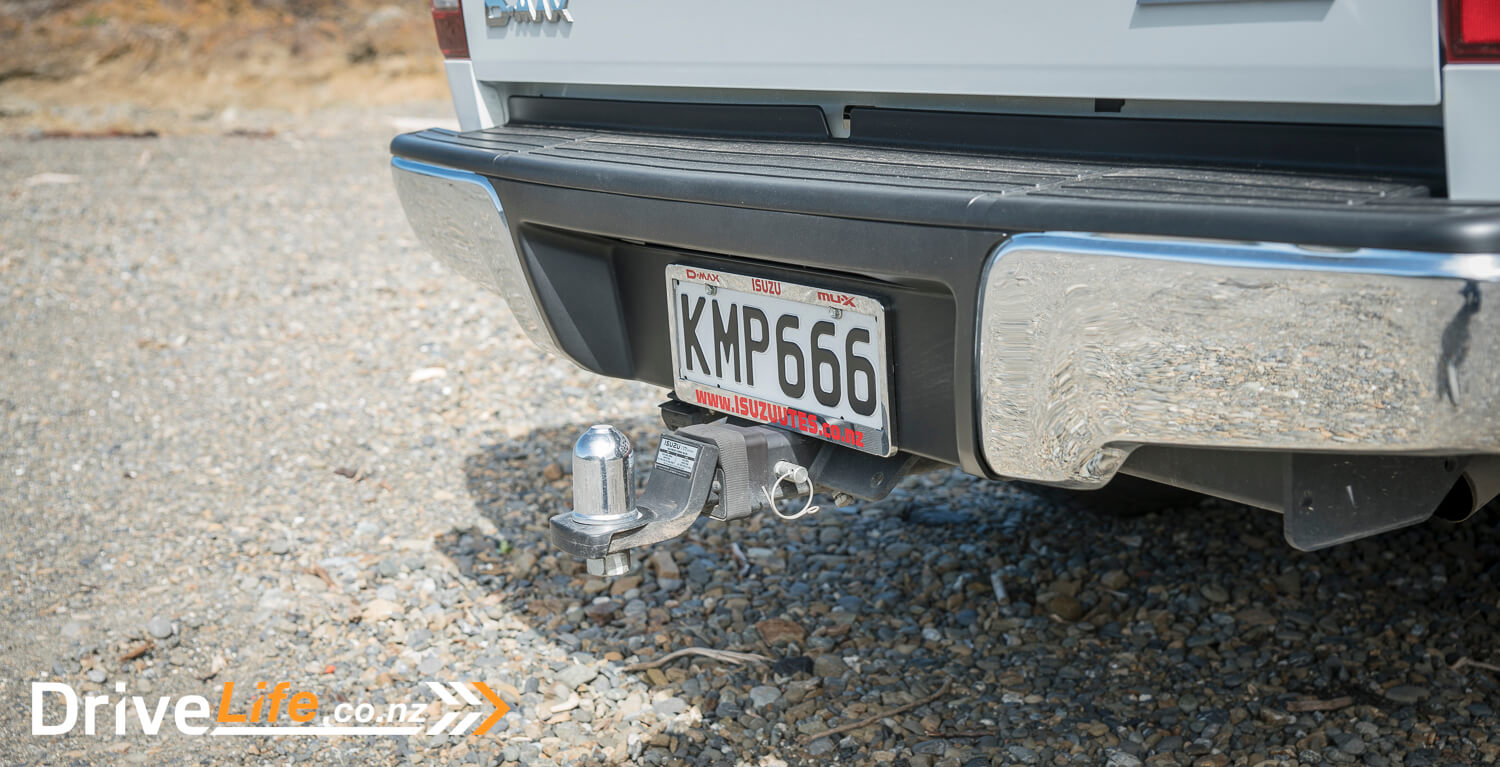
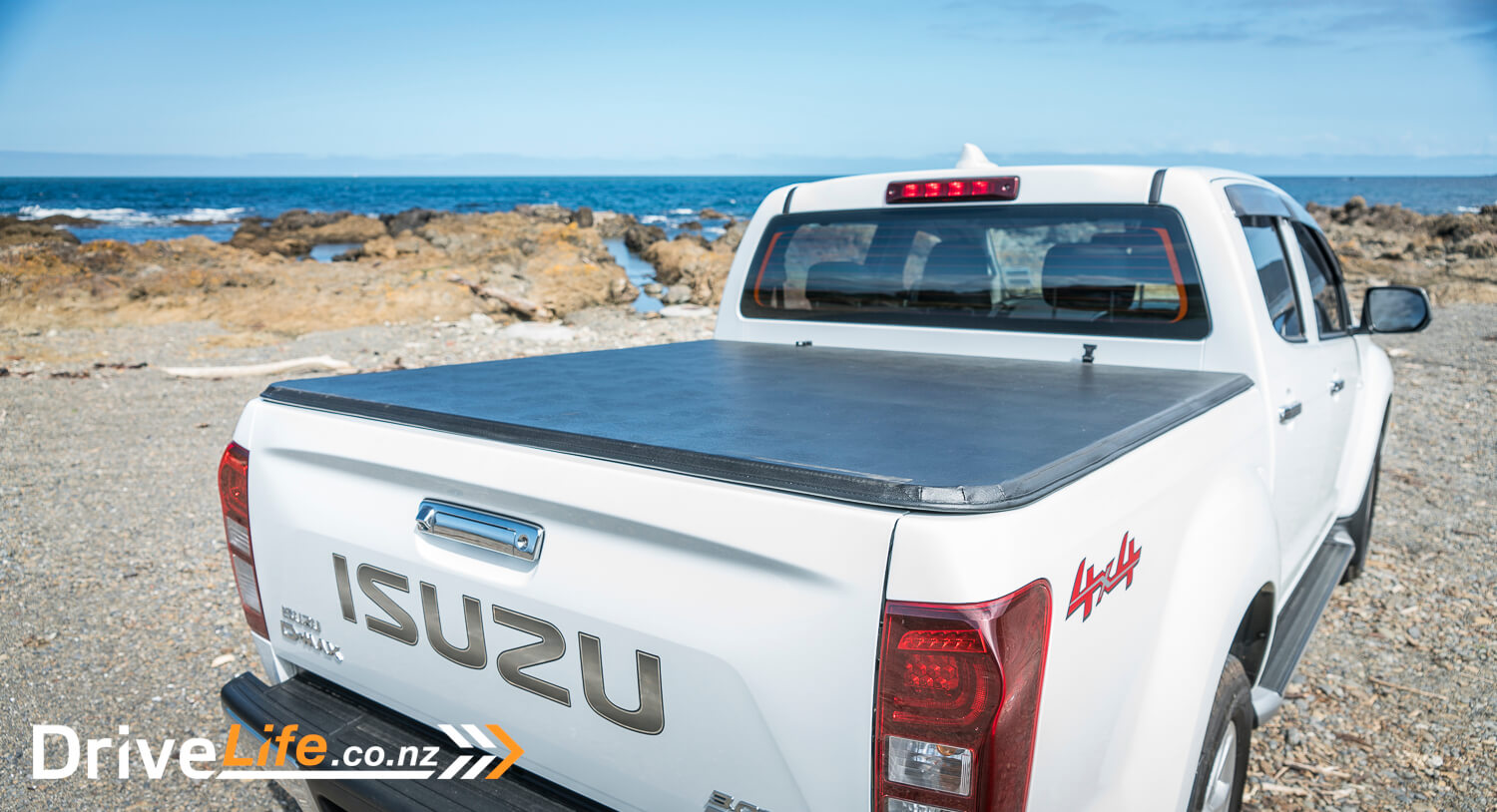












































[…] Read more about the Isuzu D-Max on http://www.drivelife.co.nz UTE REVIEWS Isuzu […]